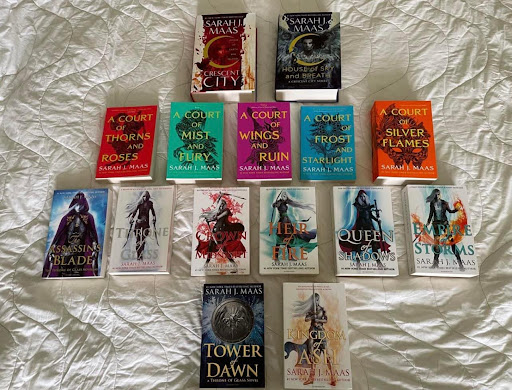Expertise, imagination, and in-depth knowledge of interpersonal communication are all necessary for mastering dialogue art. For example, writers of novels and screenplays use strong dialogue to give characters life and drive the plot forward. To do this, writers should put a high value on authenticity and ensure that their characters’ speech patterns reflect their personalities. Furthermore, tempo and rhythm are crucial because they replicate the ebb and flow of actual conversations. Subtext, or the unsaid, adds depth and enables viewers or readers to deduce meanings beyond explicit language. Finally, carefully applying dialogue tags and actions improves readability, producing a fluid, engaging experience for viewers or readers.
Voice of the Character:
Distinctive Voices: Dialogue must be customized to each character’s experiences, personality, and background. This customized approach improves realism and enriches the story, enabling readers to empathize with the characters more deeply. These distinctive voices, whether by dialect, tone, or word choice, add to a lively and engaging storytelling experience by imbuing characters with personality and realism within the story’s framework.
Narrative integrity: It depends on characters speaking consistently. By following accepted speech patterns, authors can guarantee authenticity and raise reader interest. Keeping things consistent—through formal language, slang terms, or a distinct dialect—helps create a believable and identifiable character identity. This linguistic consistency contributes to a more engaging and fulfilling storytelling experience by strengthening the story’s coherence and the bond between readers and characters.
Organic Flow:
Avoid Info Dumping: When used skillfully, dialogue can reveal information gradually rather than all at once. Integrate information into conversational flow rather than overwhelming the reader with details. This method creates a more engaging and pleasurable reading experience for the audience by letting them discover and process information organically while maintaining the narrative flow.
Listening to real conversations is the best way to learn about authentic communication. Watch for the organic flow, breaks, interruptions, and nonverbal cues in real-world conversations. This first-hand knowledge improves your capacity to write realistic, captivating dialogue that captures the subtleties of interpersonal relationships for a more credible and relatable portrayal in your work.
Contextualization:
Implied Meanings: The things said and not said in a conversation are equally important. Subtextually expressed implied meanings deepen the story by illuminating the unspoken details among characters. This method gives stories more depth by enabling readers to decipher hidden motives, conflicts, and emotions. Using deliberate omission, authors craft a multi-layered reading experience that entices readers to actively participate and explore the nuances hidden beneath the surface of the characters’ interactions.
Conflicting Emotions: Characters with conflicting emotions are more nuanced because they express one thing while struggling internally with something else. The characters’ enigma captures the attention of readers or viewers as this dissonance adds a gripping layer of tension. As viewers delve into the nuances of interpersonal dynamics and human nature, the contrast between spoken words and underlying emotions adds complexity and fosters intrigue.
Display, Not Explain:
Actions Speak Louder: Actions have a lot of weight in good storytelling, giving dialogue more depth and subtlety. Reactions and actions are dynamic components that enhance dialogue and encourage participation. Characters are brought to life by fusing spoken dialogue with physical manifestations, highlighting subtleties and feelings that might not be expressed through words alone. By incorporating action, communication is amplified, resulting in a more engaging and immersive narrative experience.
Convey Emotions: The best way to effectively portray emotions in a story is to use nuanced language and context cues, which let readers in on the characters’ emotions. Authors should use situational details, tone, and subtle expressions instead of stating emotions outright. By strengthening the bond between the audience and the story, this method creates a more engaging and emotionally impactful experience.
Tempo and Rhythm:
Sentence lengths: It must dance to a rhythm to create interesting dialogue. Sentences that are brief but impactful propel the story along. Longer, more detailed sentences, on the other hand, create vivid scenes and envelop readers in intricate detail. Professional book writing services help to produce a lively flow that draws the audience in and improves the narrative experience.
Use Pauses: Embrace pauses for effective communication. Stillness has power; it builds tension and highlights important details. Feel free of the quiet times; they should be welcomed as they can make words more impactful and deepen the dialogue between speakers or characters.
Realness:
Cultural Sensitivity: Awareness of various speech patterns, idioms, and expressions is necessary for cultural sensitivity. Minimizing misunderstandings through effective communication is facilitated by acknowledging and respecting these differences. Accepting cultural subtleties enriches relationships between people and fosters a peaceful world community by appreciating the diversity of languages.
Age and Era: The temporal context greatly influences the conversation between characters. Consider the linguistic quirks and cultural changes that come with the age and period of your story. To improve your storytelling’s authenticity and immersion, characters should speak true to their time and reflect historical or futuristic linguistic conventions.
Tension and Conflict:
Create Disagreements: Conflicting characters make for interesting dialogue in stories. Tension arises from divergent viewpoints or objectives, leading to lively discussions that advance the story. Arguments bring life to the dialogue and keep the audience interested. They also unveil character depth and act as plot development catalysts.
Build Suspense: By leaving your audience with unanswered questions or unresolved tensions, you can pique their interest and hold their attention. Leaving things unsaid stimulates curiosity and keeps viewers or readers interested as they anxiously await the conclusion. By creating tension, you can make your story more engaging and memorable.
Revision and improvement:
Read Aloud: Prioritize authenticity and a natural cadence when ghostwriting UK dialogue to sound natural when spoken aloud. Speaking aloud while reading a dialogue helps you spot awkward or unrealistic parts so the dialogue stays realistic and fluid. This technique improves the quality of written dialogues and makes reading them more captivating and immersive.
Trim Unnecessary Words: The talk should be condensed for impact. Eliminate superfluous words to stay succinct, which will increase the efficacy of the discussion. Simplifying language guarantees focus and clarity, enabling important points to be understood. Communication that is precise increases audience engagement and creates a lasting impression.
Ending Lines:
Dialogue proficiency requires constant practice, receptivity to criticism, and a commitment to improving your skills. This process makes you more perceptive to the nuances of human interaction, which turns your dialogue into a powerful tool for captivating and involving your audience. Every conversation you have improves your conversational skills and allows you to tell engaging stories that capture the complexities of human connection.









